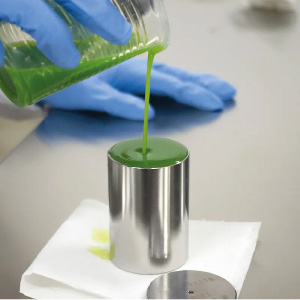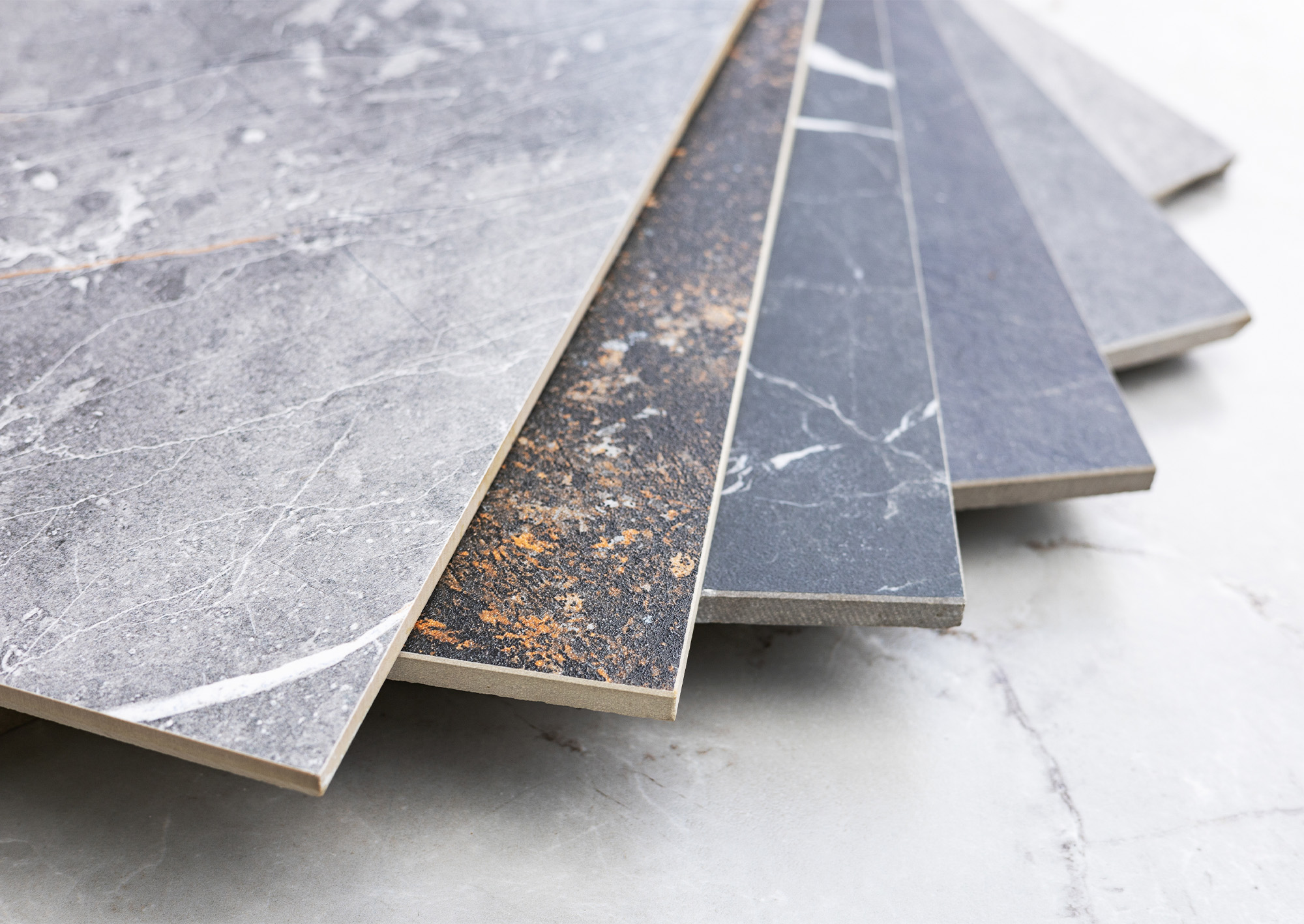Table of contents
- Introduction
- What are low-emission inks?
- The technical functioning of low-emission inks
- Environmental and production advantages
- Sicer innovation in low-emission inks
- Applications and technical performance
- Integration into industrial production processes
- Regulatory compliance and certifications
- Future trends and technological developments
- Conclusions
- FAQ
Introduction
The ceramic industry is undergoing a profound transformation, driven by the urgent need to reduce environmental impact and improve production efficiency. In this scenario, low-emission technologies represent a decisive step towards sustainable ceramic production.
Among these, low-emission digital inks play a key role, allowing high aesthetic and performance standards to be maintained while significantly reducing the harmful substances released during firing.
This article explores how low-emission inks work, the technological innovations that make them possible, the advantages for industrial plants and the contribution of the .LE series by Sicer, one of the most advanced solutions in the sector.
What are low-emission inks?
Low-emission ceramic inks are formulations specially developed to release very low levels of VOCs, aldehydes and other volatile organic compounds during the preheating and firing stages in ceramic kilns. They use eco-friendly organic vehicles, designed to evaporate only at high temperatures and ensure cleaner combustion.
Compared to traditional inks, which can generate intense odours and carbon deposits, these advanced inks allow for more efficient management of the production process. The composition is based on ultra-refined solvents, micronised ceramic pigments and functional additives free of glycols and ethers.
The adoption of low emission inks is often driven by regulatory requirements: directives such as IPPC, AIA authorisations and tests according to UNI EN ISO 11890 ensure that the production cycle complies with environmental sustainability and safety standards.
The technical functioning of low-emission inks
During application in digital ceramic printing, low-emission inks behave in a manner that is fully compatible with existing ceramic inkjet systems. They are deposited on the ceramic surface and begin their thermal process without premature evaporation.
The real difference emerges during the baking phase. Here, thanks to the specific composition, the degradation of organic components occurs in a controlled and delayed manner, in an area of the oven with temperatures above 500 °C. This shift allows for more complete pyrolysis and the transformation of substances into CO₂ and H₂O, reducing the formation of VOCs, aldehydes and other harmful by-products.
In this way, the oven acts as a real post-combustion chamber, improving process efficiency and reducing the accumulation of residues.
Environmental and production benefits

The benefits of using low-emission inks are numerous. First of all, from an environmental point of view, there is a significant reduction in ceramic emissions: up to 70% less odour, 60% less formaldehyde and 50% less VOC. These results are confirmed by tests conducted on the .LE series by Sicer.
To further clarify the extent of the environmental benefits, here is a comparative table that compares the VOC emissions between a traditional ceramic ink and an ink from the .LE series by Sicer:
| Type of ink | VOC emissions (relative value) | Reduction compared to traditional methods |
| Traditional ink | 100% | – |
| .LE ink by Sicer | 50% | -50% |
These data, certified by laboratory tests and under real production conditions, highlight how the use of the .LE line allows for a significant reduction in ceramic emissions, contributing in a concrete way to the sustainability of the entire production cycle.
But the advantages do not end with the environment. The reduced formation of residues and the absence of intense odours significantly improve the air quality in the factory, making the working environment healthier and safer. From an energy point of view, the greater stability of the thermal cycle and the reduction in machine downtime contribute to more efficient resource management and greater energy efficiency in the tiles.
Sicer innovation in low-emission inks
Sicer’s commitment to ink research and development has led to the creation of the .LE series, an advanced project based on eco-friendly ceramic technologies. The .LE line uses an optimised eco-solvent base to ensure high performance and minimal environmental impact.
Tests conducted by independent bodies have certified a reduction in emissions without compromising print quality. The performance of Sicer inks remains high even under intense working conditions and prolonged thermal cycles.
The range includes customisable primary inks, digital effects for textured surfaces and a digital glue available in high temperature (HT) and low temperature (LT) versions, all solutions designed to adapt to the production needs of leading industrial ceramic plants.
Applications and technical performance
The technical performance of .LE inks is confirmed by established industrial applications. The colours maintain a stable and uniform chromatic quality, resist thermal variations and ensure repeatable results over time.
These inks are effective on various types of substrates: porcelain stoneware, glazed tiles and textured surfaces. Their ability to maintain high ceramic colour fastness helps to reduce waste and improve process efficiency.

dida: Over the years, research into ceramic inks has led to the selection of solvents with high evaporation temperatures, achieving excellent performance with formulations based on fatty acid esters.
Furthermore, the absence of carbon residues reduces surface defects and simplifies cleaning operations at the end of the cycle.
Integration into industrial production processes

The introduction of .LE inks into ceramic industrial processes does not require any changes to production lines. This allows for simple, quick and sustainable integration without additional costs for technical adjustments.
Once installed, operators can count on optimised ceramic production: less machine downtime, reduced waste and improved overall performance. The technical support provided by Sicer also includes on-site training and assistance with the correct setting of digital ceramic printing parameters.
Regulatory compliance and certifications
In an increasingly demanding regulatory environment, the adoption of .LE inks allows companies to comply with the main ceramic emissions regulations. The formulations comply with the limits on VOC, TOC, aldehydes and odour units imposed by AIA, IPPC and European regulations.
Sicer provides technical documentation and safety data sheets, which are useful for environmental audits and for obtaining environmental certifications. In addition, the use of cleaner inks improves internal safety standards and helps to create healthier environments in accordance with industrial safety standards guidelines.
Future trends and technological developments
The path traced by solutions such as .LE points clearly towards environmental sustainability and continuous innovation. The next generations of inks will be increasingly integrated with Industry 4.0 ceramic systems, enabling real-time monitoring and traceability of emissions.
Ink research and development is also focusing on new features: resistance to bacteria, self-cleaning surfaces and synergies with advanced glazes. At the same time, product life cycle analysis (LCA) and carbon footprint will become key parameters in the choice of formulations.
Conclusions
Low-emission inks are now a strategic lever for ceramic companies that want to combine production quality, regulatory compliance and a sustainable vision. The .LE series by Sicer is a concrete example of Italian ceramic innovation, capable of combining industrial efficiency and environmental responsibility. Choosing solutions such as .LE means investing in quality ceramic inks, technical reliability and the future of the sector.
FAQ
These are ceramic inks formulated to reduce the amount of volatile organic compounds, aldehydes and odours generated during firing in kilns.
They offer a significant reduction in emissions, maintaining high chromatic performance and total compatibility with digital ceramic machines.
Yes, the .LE series has been tested and approved by leading manufacturers of digital ceramic printers.
Through standard tests on COT, VOC, aldehydes and odour units, certified by independent third-party laboratories.
Absolutely. The concentrated bases .LE allow for the custom formulation of any shade requested by the customer.







